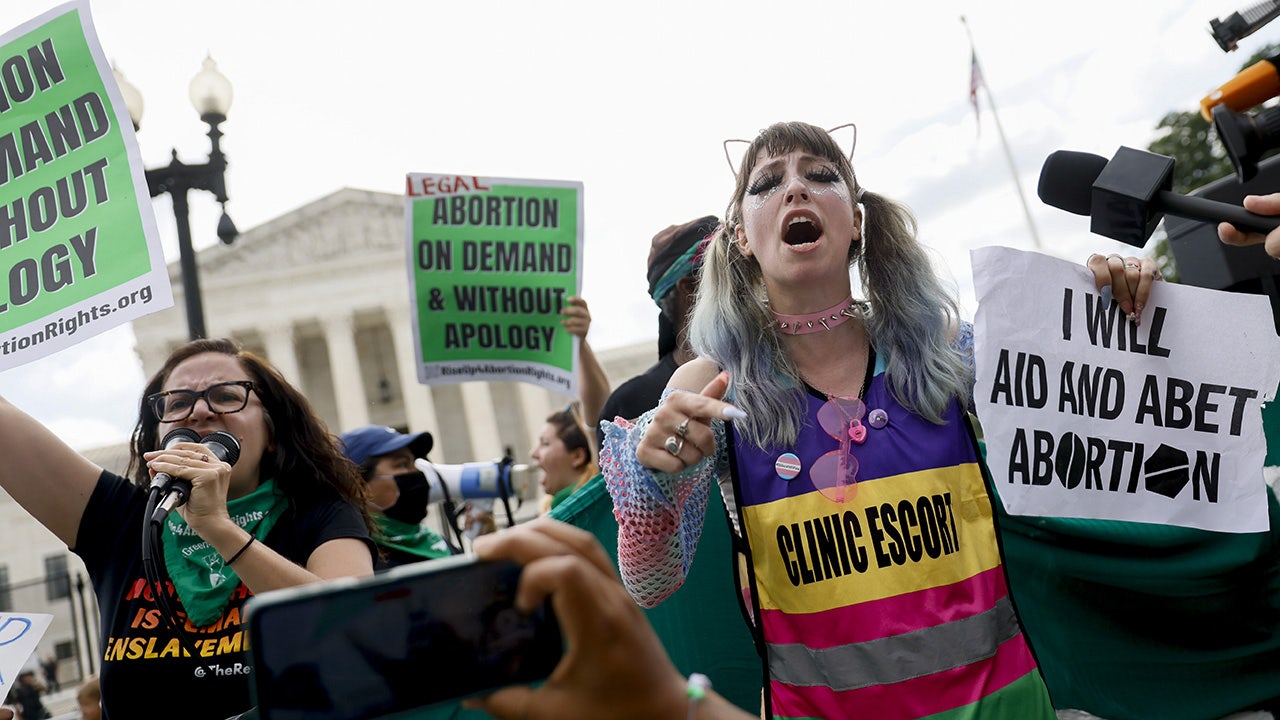West
More blue cities using drones instead of police for some 911 calls, expert says: 'They can't get cops'
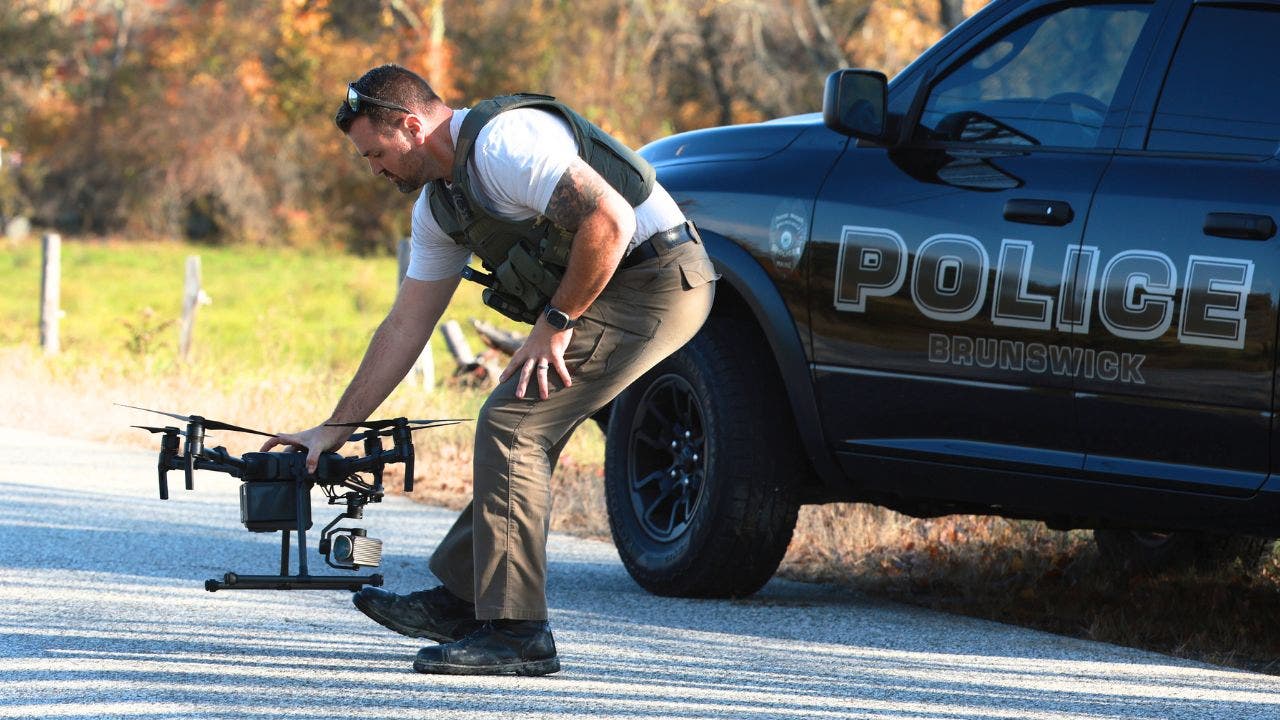
Quick, efficient and with a bird’s eye view of any scene, more police departments are embracing the use of drones to carry out law enforcement work, with some blue cities now even using them to respond to 911 calls.
Around 1,500 police departments across the country are currently using drones in some form, according to a report by the Electronic Frontier Foundation, a digital privacy group, with agencies deploying the technology for crowd control purposes, missing people searches, tracking fleeing suspects or mapping crime scenes.
Steep budget cuts and dwindling staff numbers in blue cities, in particular, make drones both an effective and cost-saving tool for police in Democratic strongholds.
COLORADO POLICE PLAN TO USE DRONES AS FIRST RESPONDERS, CALLING THE TECHNOLOGY ‘FUTURE OF LAW ENFORCEMENT’
A law enforcement official sets up a drone during a manhunt for suspect Robert Card following a mass shooting on Oct. 27, 2023, in Monmouth, Maine. (Joe Raedle/Getty Images)
Today’s police drones are much bigger than regular drones commonly used for recreational purposes, with much longer battery lives and features such as thermal sensors, loudspeakers, spotlights or beacons.
Several law enforcement agencies in Colorado, including the Denver Police Department, which has seen cuts due to its migrant crisis, are making plans to start dispatching drones instead of officers to respond to 911 calls and at least 20 agencies in Colorado’s Front Range already use drone technology for certain tasks.
The city of Chula Vista, California, was one of the first cities to use drones for 911 calls and has deployed unmanned aircraft nearly 20,000 times since 2018 to respond to emergency incidents such as crimes in progress, fires, traffic accidents and reports of dangerous subjects.
The use of the technology meant that in nearly 4,300 of those cases, officers were not physically required to respond to a location as the situation was properly assessed from a control room. Police in Beverly Hills, Santa Monica, Burbank, Fremont and Hawthorne as well as the Los Angeles County Sheriff’s Department also use the innovative technology in the state.
“Some of the cities that are rolling them out are rolling them out because they have no choice, because they can’t get cops to take the job.”
Last year, Chicago lawmakers passed a bill that allows police to use drones during special events like parades, walks, races but not during protests or demonstrations.
Elsewhere, the NYPD told Fox News Digital that it is rolling out drones to respond to possible 911 calls of shootings in the Big Apple.
“Some of the cities that are rolling them out are rolling them out because they have no choice, because they can’t get cops to take the job,” former NYPD inspector Paul Mauro told Fox News Digital. The NYPD saw an exodus of police in the wake of the defund the police movements, progressive policing reforms and anti-cop rhetoric sparked by the killing of George Floyd in 2020.
“And I think now a lot of cities, blue cities in particular, are starting to realize, well, we’ve thrown the baby out with the bathwater. We need cops. You see it in places like Seattle where they had the CHOPS (Capitol Hill Organized Protest), where they had these police no-go zones and people died. There were murders and all kinds of robberies, so there’s a realization that, OK, we do need policing. The use of technology has always been part of policing.”
“But at the end of the day it’s helpful, and it will potentially take some weight off of police because a drone can get there quickly – especially in a congested area like Manhattan – it can tell you what’s going on and how many cops [you need]. Is it an emergency? Is it a verified shooting? Is somebody bleeding out in the street?”
BEVERLY HILLS POLICE DRONE CATCHES BURGLARY SUSPECT FALL OFF LADDER INTO POOL
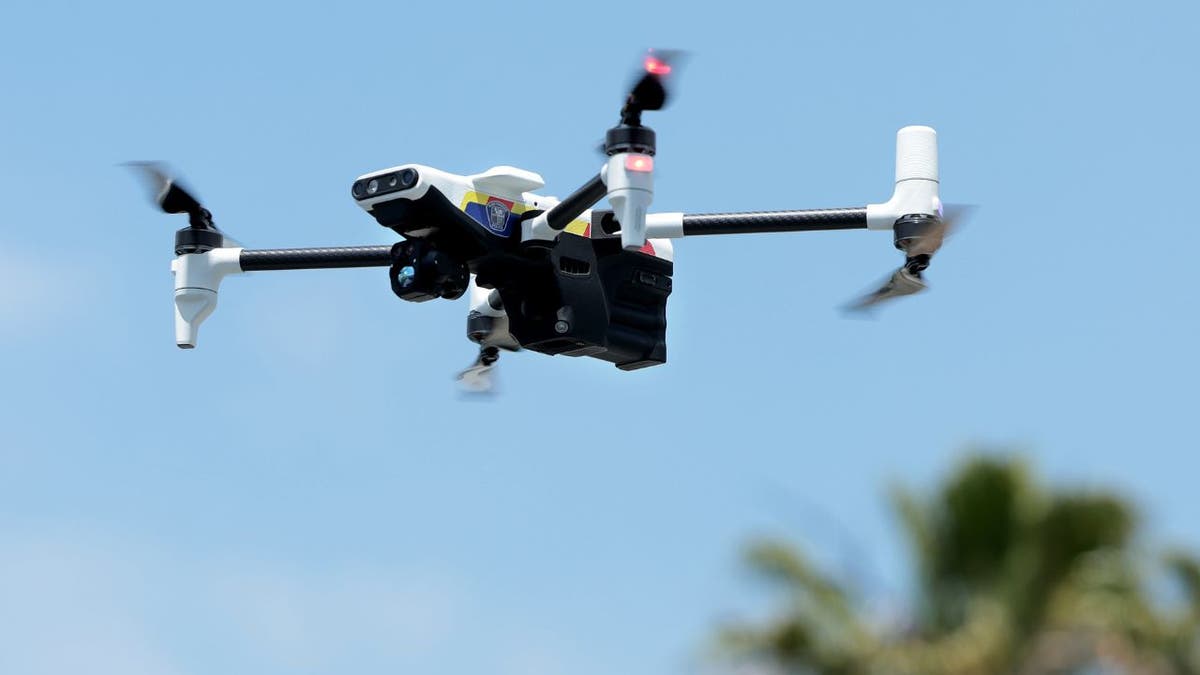
More blue city police departments are embracing the use of drones to carry out police work, with some cities now even using them to respond to 911 calls. (Wally Skalij/Los Angeles Times via Getty Images)
Maryland has also witnessed progressive laws to reform policing and the Montgomery County Police Department (MPD) began rolling out its “Drone as First Responder” (DFR) program in October in the wake of rising crime and a staff vacancy rate of 43%, according to police officials.
Since October, the drone system has been deployed over 850 times with an average response time of just under 49 seconds, according to police data.
The system was used mostly for theft, about 33% of the time, with reports of suspicious persons next on the list accounting for 15% of responses. Police say the deployment of drones meant that patrol units were not needed in over 120 instances.
The MPD has hailed the system for apprehending criminal suspects and allowing the agency to be more efficient with police resources by providing real-time information to ground officers.
Meanwhile, the NYPD’s new drone program is being piloted to supplement its gunshot detection system known as ShotSpotter, which alerts police to a possible shooting. Under the new drone system, five police precincts are being trialed to have drones immediately deployed to the scene when such an alert goes off. The five precincts include three in Brooklyn, one in the Bronx, and one in Manhattan at the Central Park Precinct.
A drone pilot remotely based in the NYPD’s Joint Operations Center in Lower Manhattan activates a drone to fly to the location of the gunfire, an NYPD spokesperson told Fox Digital.
“Prior to police officers’ arrival on the scene, officers will see what the drone sees in real time via their smartphones,” the spokesperson said. “This emerging technology stands to enhance situational awareness as officers arrive at scenes, promote officer safety, and help NYPD leadership deploy resources in an effective and efficient manner.”
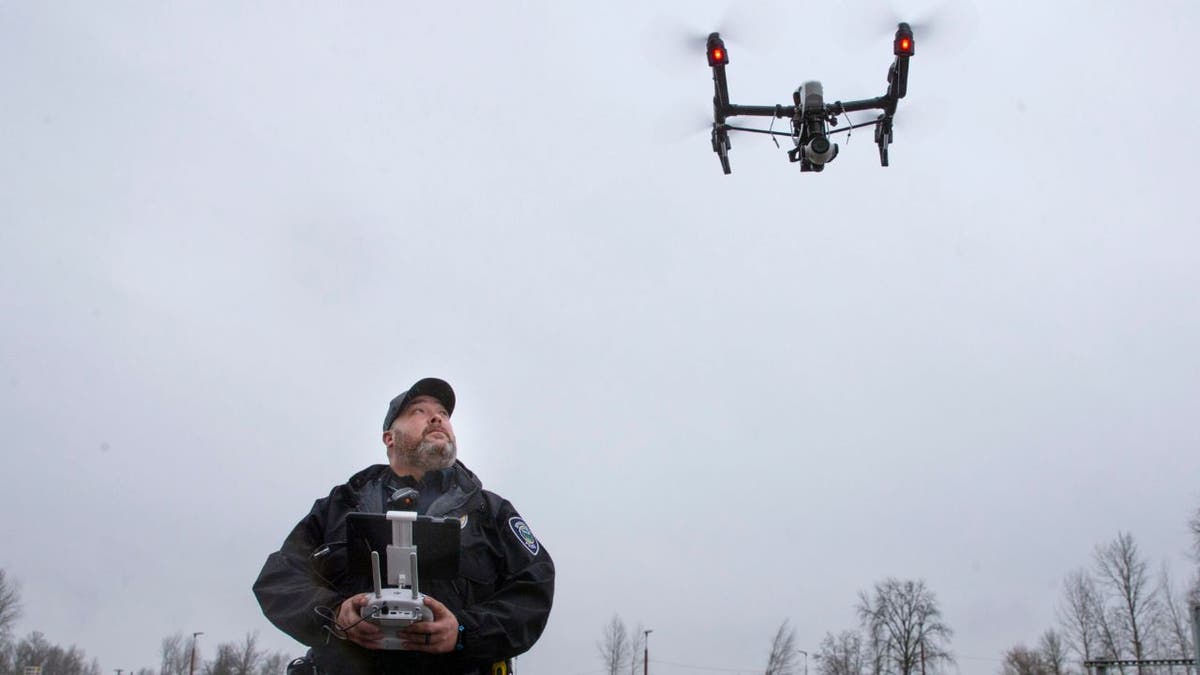
Springfield police officer Tony Del Castillo takes out a new drone for a test flight at the city fuel depot in Springfield, Oregon. (Imagn)
Drone technology is developing at a rapid rate with Amazon already using it to deliver packages to customers.
BRINC, a Seattle-based drone company, has launched a purpose-built 911 response drone that can deliver life-saving medical supplies to a scene, such as EpiPens, defibrillators, personal floatation devices (PFDs) and naloxone (Narcan), as well as assessing low-priority calls without the need to dispatch personnel.
“Undeniably, they are an assist,” Mauro said of police drones. “It’s a force multiplier in departments that just can’t get enough people to cover the ground. In dense urban areas, the drones can get there faster, and very rural areas where it could take a cop 20 minutes to get to the accident site or the scene of the call, a drone can get there very quickly and let you know what you’re getting into.”
However, Mauro said that deploying police drones opens up a host of other issues, including privacy and civil rights concerns. In a report last year, the American Civil Liberties Union (ACLU) recommended guardrails be put in place to make sure the technology does not “evolve into much broader surveillance programs.”
The report states that police departments should not be able to roll out surveillance technologies without the consent of the community it serves.
“Good policies, including on usage limits, transparency, and privacy, should not be left up to police departments, but should be given legal force by a city council or other legislative body as part of a vote to approve a DFR program.”
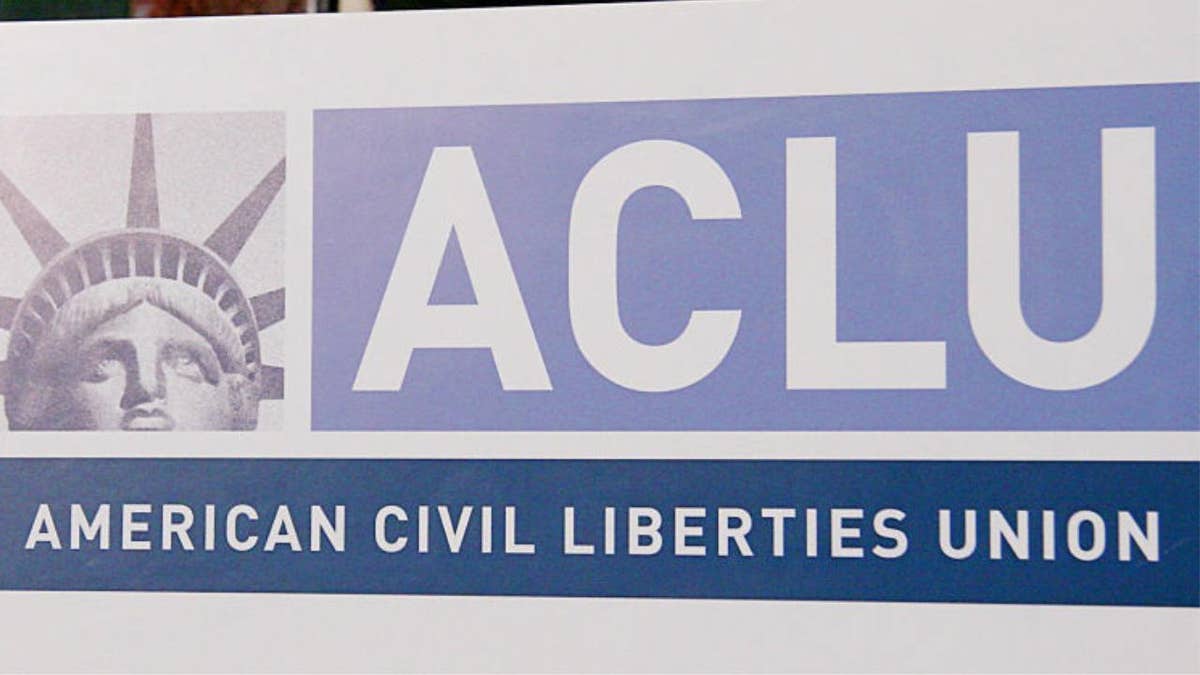
The American Civil Liberties Union has raised privacy and surveillance concerns about the technology. (KAREN BLEIER/AFP via Getty Images)
The ACLU has called for strict privacy rules, usage limits for where drones can be deployed and for police to provide clear information about where and when surveillance drones are being operated.
Mauro said police departments need to figure out how to properly manage public requests, the man hours fetching that type of information might take, and what footage needs to be saved or deleted. He said the same issues came to the fore with the rollout of police body cameras.
“The police departments are going to be a blizzard with subpoenas for that footage,” Mauro said regarding drones.
“And I think the real key … is that there has to be significant human interaction with the drone. The drone has to be very subordinate to somebody who’s controlling it, it has to be police in real time watching what’s going on and making decisions and controlling the drone.”
“So look, there are a lot of issues relative to electronic surveillance that go beyond drones, and when you’re talking about a government that implicates the Constitution and the Bill of Rights, and so that makes things that much more volatile and complicated. It’s just something that has to be watched very closely.”
Read the full article from Here

New Mexico
Fires drive more wildlife into Ruidoso

While these wildfires keep burning, the people in the community can expect to see wildlife in more common areas.
While the South Fork and Salt wildfires keep burning, it’s not just structures and houses that were lost in the Village of Ruidoso, but the homes of wildlife in the area.
It’s not uncommon to see elk, wild horses, or even a bear in Ruidoso. As wildfires ripped through the area, some were concerned about these animals. But experts say they should be adapted to wildfires.
“Animals in New Mexico have been adapted to deal with wildfires as part of their natural dynamic. Our plant-animal communities are pretty resilient to fire,” said Melissa Garnett, a spokesperson with the New Mexico Department of Game and Fish.
Garnett says residents should expect to see more animals.
“In times of fire like this, those ranges can be temporarily, changed. so we’re seeing more animals in town.”
Residents in the area told me they had seen an increase in wildlife.
Garnett says as wildlife moves to new areas, they’re using the roadways and warns people to be extra careful. “There’s also been some reports, wildlife-vehicle collisions that have come in. People need to use extra caution when they are driving”
She says there is no telling how many animals are displaced, but says it’s going to take some time.
“It’s still very early. there’s, it’s going to take some time to get the full environmental impact of this fire. and our conservation experts will assess the impact of this fire and any post-fire recovery that is needed. But not until after the fire has been fully extinguished,” said Garnett.
If you see an injured animal, contact the New Mexico Game and Fish Information Center.
Oregon
Oregon Secretary of State Griffin-Valade certifies May primary election results; 35% of voters returned ballots – KTVZ
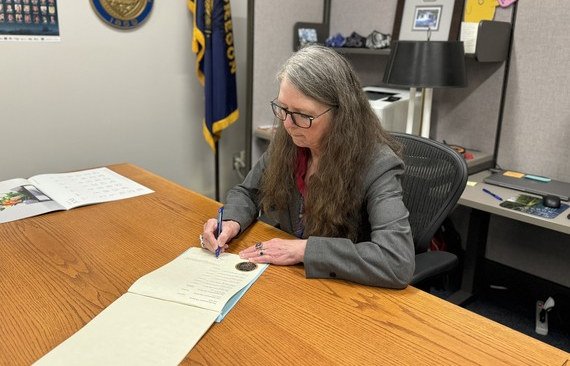
SALEM, Ore. (KTVZ) — Oregon Secretary of State LaVonne Griffin-Valade certified the results of the 2024 primary election on Thursday. Official election results are available on their website.
“Oregonians are voters, as proven with the success of this election,” Griffin-Valade said. “This primary election was one of the most secure in Oregon’s history, and the November general election will be the same.”
According to the statistics released Thursday by the Elections Division, final voter turnout for the primary election was about 35% of registered voters.
“My deepest gratitude goes out to all of the county clerks and elections officials across Oregon who worked tirelessly to ensure this election went smoothly,” said Secretary Griffin-Valade. “They are on the front lines making sure our democracy works, and I couldn’t be prouder of their efforts.”
For more information, visit our website: OregonVotes.gov
KTVZ NewsChannel 21 is committed to providing a forum for civil and constructive conversation.
Please keep your comments respectful and relevant. You can review our Community Guidelines by clicking here
If you would like to share a story idea, please submit it here.
Utah
How the SCOTUS ruling on Idaho’s emergency abortion ban will affect patient transfers to Utah

SALT LAKE CITY — The United States Supreme Court sidestepped a decision Thursday on whether federal law requires states to provide pregnancy terminations in medical emergencies even in cases where the procedure would otherwise be illegal.
Instead, the court’s opinion – which stems from Idaho’s near-total abortion ban – kicked the legal questions surfaced in the case back to the lower courts and reinstated a previous ruling that will allow doctors in the state to perform emergency abortions in the meantime.
That means women in Idaho are unlikely – at least for now – to be airlifted to nearby states like Utah for the procedure.
“After today, there will be a few months — maybe a few years — during which doctors may no longer need to airlift pregnant patients out of Idaho,” Justice Ketanji Brown Jackson wrote of the decision’s impact, in an opinion that dissented in part and concurred in part with the broader court’s ruling.
But the dismissal of the case leaves open key legal questions and sets up the potential that the issue of emergency room abortion care will come to the court again in the future.
In her brief, Jackson was critical of the court’s indecision, arguing that the ruling represented “not a victory” for Idaho patients but a “delay” – and that doctors still face the difficult decision of “whether to provide emergency medical care in the midst of highly charged legal circumstances.”
Conservatives Chief Justice John Roberts and Justices Brett Kavanaugh and Amy Coney Barrett joined Jackson and her liberal colleagues, Justices Elena Kagan and Sonia Sotomayor, in the 6-3 opinion, which was erroneously posted online Wednesday. Justices Samuel Alito, Neil Gorsuch and Clarence Thomas dissented.
In his opinion, Alito also argued that the legal questions in the case – which come as abortion has become a political flashpoint in the U.S. presidential election – should have been decided, saying it was as “ripe for decision as it will ever be.”
“Apparently, the Court has simply lost the will to decide the easy but emotional and highly politicized question that the case presents,” he wrote.
Alito indicated that he would have ruled against the Biden administration’s interpretation that the federal Emergency Medical Treatment & Labor Act (EMTALA), which requires hospital emergency rooms that receive Medicare funding to provide treatment to people experiencing medical emergencies, supersedes Idaho’s abortion ban.
Idaho law allows doctors to terminate a pregnancy for any woman with emergency health complications who is clearly on the brink of death. But it’s quiet on the question of what to do when pregnancy complications put someone’s health at risk but don’t imminently risk her life.
Under threat of jail time and loss of their medical licenses, Idaho doctors said prior to Thursday’s ruling that they sometimes had no choice under such circumstances but to send a woman across state lines by helicopter or advise her to otherwise get to another state for treatment.
“Those transfers measure the difference between the life-threatening conditions Idaho will allow hospitals to treat and the health-threatening conditions it will not,” Kagan wrote in a concurring opinion Thursday.
Some women were transferred to reliably blue states like Washington and Oregon. But Utah’s capital was “one of the places we’ll tend to call first,” Stacy Seyb, a physician specializing in maternal-fetal medicine at St. Luke’s Hospital in Boise, told FOX 13 earlier this year.
While abortion remains legal up to 18 weeks in Utah, a near-total ban is currently on hold pending a ruling from the Utah Supreme Court.
Rep. Karianne Lisonbee, R-Clearfield, sponsored the abortion ban in the House and noted in a statement that “today’s Supreme Court ruling has no direct implications on Utah’s strong pro-life laws, including our trigger law.” “Utah will continue to stand up for policies that protect the unborn,” she added.
Thursday’s ruling does mean doctors in Idaho likely won’t have to airlift patients to Utah and other states, which Planned Parenthood Association of Utah Chief Corporate Affairs Office Shireen Ghorbani called a “small victory.”
“But what should have happened honestly is the Supreme Court should have said you have a right to emergency medical treatment, you’ve had that right for 40 years and you should have the right to an abortion if that is the appropriate medical care for the complication for the experience that you’re having,” she argued.
Regardless of the court’s decision, Ghorbani said she expects some Idaho women will still have to come to Utah for abortion care.
“Twenty two percent of their OBGYNs have left the state, they are running very low on specialists in maternal-fetal medicine,” Ghorbani noted. “That reality has now been created for people who live in Idaho. So there may still be people from Idaho who are seeking emergency medical care in Utah and this is what happens when we ring this bell.”
Recently released data from the Guttmacher Institute, a research group that supports abortion rights, showed that 7% of all abortions performed in the state last year were for non-residents coming to Utah from Idaho. The data showed some Utah women also traveled out of state in 2023, to both Nevada and Colorado.
-

 News1 week ago
News1 week agoNYC pastor is sentenced to 9 years for fraud, including taking a single mom's $90,000
-

 Movie Reviews1 week ago
Movie Reviews1 week agoFancy Dance (2024) – Movie Review
-

 News1 week ago
News1 week agoRead the Ruling by the Virginia Court of Appeals
-

 Crypto1 week ago
Crypto1 week agoIdris Elba Promotes Cryptocurrency in West Africa – BORGEN
-
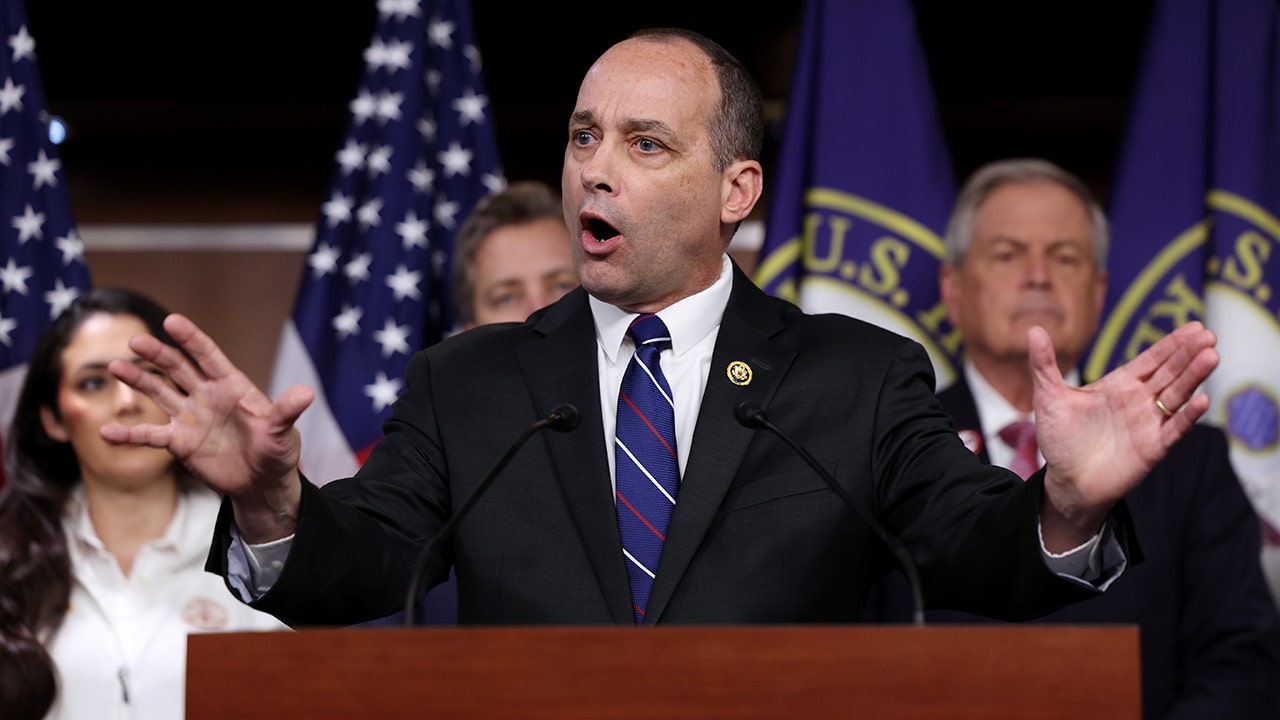
 Politics1 week ago
Politics1 week agoTrump targets House Freedom Caucus chair in intra-party Republican primary feud
-

 News6 days ago
News6 days agoTracking a Single Day at the National Domestic Violence Hotline
-

 Politics7 days ago
Politics7 days agoTrump classified docs judge to weigh alleged 'unlawful' appointment of Special Counsel Jack Smith
-

 News6 days ago
News6 days agoSupreme Court upholds law barring domestic abusers from owning guns in major Second Amendment ruling | CNN Politics











